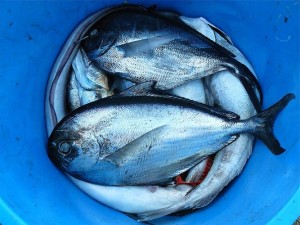 Eutrophication and brownification of lakes decreases the content of essential fatty acids in fish used in human diets, according to recent studies. It alters the phytoplankton community structure and decreases the production of essential omega-3 fatty acids by between 1.5 to 1.9 times.
Eutrophication and brownification of lakes decreases the content of essential fatty acids in fish used in human diets, according to recent studies. It alters the phytoplankton community structure and decreases the production of essential omega-3 fatty acids by between 1.5 to 1.9 times.
Fish are vital to the human diet as they are high-quality food due to their high content of polyunsaturated fatty acids, essential for human health. Fish depend on algae to produce the essential omega-3 fatty acids which are then transferred in the food chain.
Eutrophication basically occurs due to increasing phosphorus concentration in lakes and brownification is the result of increased leaching of partially decomposed organic matter to aquatic ecosystems. Both eutrophication and brownification alter the phytoplankton community composition in lakes, resulting in the decline of the proportion of EPA and DHA producing algae in the lake.
Scientists from the Universities of Eastern Finland, Jyväskylä and Helsinki together with the Finnish Environment Institute (SYKE) found that the EPA and DHA content of phytoplankton decreased along with eutrophication and brownification of lakes and that the EPA and DHA content in the muscle of large piscivorous perch decreased concurrently.
The results of the study make this the first time the fatty acid content of phytoplankton has been shown to impact the food chain up to predatory fish.
Over the last decade or two, brownification of lakes has been detected in the whole of the northern hemisphere, and eutrophication is a huge problem in many lakes in Finland. THIs is important in Finland due to the fact that the majority of the population mainly survives on fish, which also provides an economic boon.
Of course, apart from causing problems with our fish population, eutrophication and brownification of lakes also affects the drinking water supplies in those areas and can cause those who drink it to become rather ill.





